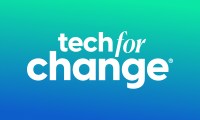One of the challenges facing countries that want to change over from burning fossil fuels to more renewable energy sources is how to store energy. In Australia, the Victoria region currently relies on burning coal in power plants which produce energy throughout the days and seasons. But the state wants at least 50% of its power coming from renewable sources by 2030 — and for that, it needs an energy infrastructure including a way to store energy produced by solar, wind, or other renewable sources, which may only work in certain conditions.
That’s why Victoria is building one of the world’s largest batteries, the Victorian Big Battery Megapack. The battery will be the size of a football field and will provide 450 megawatts-hours of storage with up to 300 megawatts of power output. That’s double the size of the Hornsdale Power Reserve in South Australia, another giant battery made by the same company that made headlines in 2018.
The company Neoen will build the battery along with Tesla, a company that has become a leading expert in battery technology through its development for electrical vehicles. The battery will be used as an automatic backup in case the local electrical grid is unstable, which should prevent blackouts — a problem which has become more pressing as the Victoria grid becomes overtaxed.
One of the problems caused by climate change in the region is hotter summers, with Australia’s last summer being the hottest and driest on record. This puts additional strain on thermal generators, which contributes to instability in the power grid. Such a large battery can hold a charge to be used when the system is unstable, so people in the region should have a more reliable supply of electricity.
The aim is for the battery to be ready for use by the end of next year, and Victoria politicians are hailing it as part of the state’s move away from fossil fuel dependence and toward a more sustainable future. “By securing one of the biggest batteries in the world, Victoria is taking a decisive step away from coal-fired power and embracing new technologies that will unlock more renewable energy than ever before,” Lily D’Ambrosio MP, Minister for Energy, Environment and Climate Change, said in a statement.
Editors' Recommendations
- ‘World’s largest sundial’ to double as green energy provider
- One of these women could be the first to step on the moon
- Tesla unveils ‘truly revolutionary’ new battery
- Tesla’s new million-mile battery could finally make electric cars affordable





